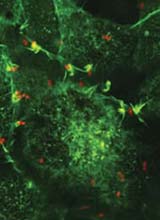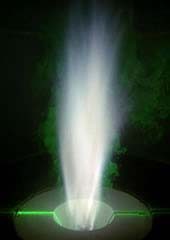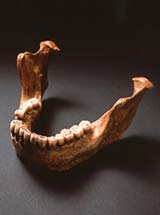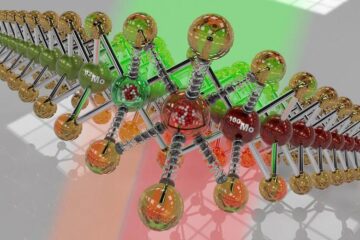Latest News

Researchers Spin Electrons with Electricity
In any computer’s hard drive, magnetic fields spin electrons this way or that. Now physicists have demonstrated that an electric field can do the same when applied to electrons in semiconductors. And unlike the older magnetic approach, their new device, called a spin gate, is capable of easily imparting a range of spin values. The team’s results, described in a report appearing today in the journal Nature, may one day help to scientists realize the ideal of spintronics—quantum computing based on ele

Milky Way Dark Matter Object Detected For First Time
Astronomers from the University of Pennsylvania, in collaboration with an international team of researchers, have made the first direct detection and measurement of the properties of a dark matter object in the Milky Way.
This observation of a gravitational microlensing event — a temporary increase in the brightness of a background star during the time it takes dark matter to pass in front of it — is reported in today’s issue of Nature.
“By measuring its mass, distance and velocity, w

Flesh-eaters make skin creep
Bacteria give skin cells their marching orders.
Bacteria that cause potentially lethal ’flesh-eating’ infections make their entrance by telling skin cells to step aside. The bugs hijack the body’s signal for skin cells to become mobile.
Group A streptococci (GAS) normally infect the surface lining of the throat. But occasionally they penetrate skin or the tissues lining the airways, invading deep into the body and causing life-threatening disease.
Finding out how s

Water power
A new material helps to make clean fuel from water.
Scientists in Japan have found a more efficient way to extract hydrogen, the ultimate ’green’ fuel, from water. They have developed a material that uses sunlight to break water molecules into their constituent elements of hydrogen and oxygen 1 .
The material is not yet efficient enough to be commercially viable, but its inventors believe that it can be improved. If they are right, hydrogen may soon be on tap

Ancestors skip adolescence
Dental diary of a teenage hominid aged 1.5 million years.
Our early ancestors never went through the awkward age, suggests a new analysis of dental records. Extended youth may have emerged relatively late in human evolution.
Although apes cut the apron strings at around 12 years, despairing human parents are well aware that their kids take at least 18 years to grow up. The development of this prolonged growth period is seen as a key event in human evolution, allowing extra ti

Receptor Plays Key Role In Stem Cells’ Pluripotency
Scientists at the University of Pennsylvania have identified a receptor that plays a key role in restricting embryonic stem cells’ pluripotency, their ability to develop into virtually any of an adult animal’s cell types.
The work is the first demonstration of a mechanism by which pluripotency is lost in mammalian embryos, one that operates with nearly the precision of an on/off switch in mouse embryos.
With further study, the receptor, dubbed GCNF, could open the door to new ways of c











